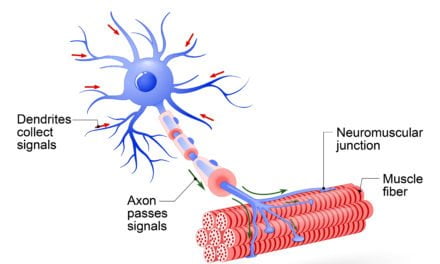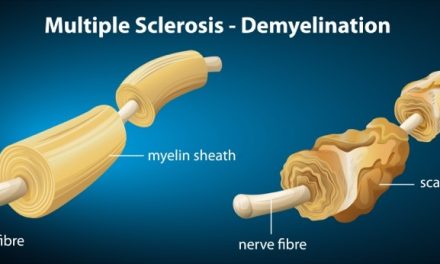
Symptoms of Parkinson’s Disease-How PEMF Therapy Can Help

Symptoms of Parkinson’s Disease can sometimes be difficult to spot early on, but as the disease begins to progress the individual suffering with the disease may become frustrated as they worsen.
Oftentimes the symptoms may be dismissed as being associated with some other condition or illness, but it’s important to note that when similar symptoms appear and get better in a short period of time, they are most likely not Parkinson’s at all.
This disease can be mysterious at onset, but it can be frustrating for the patient as it progresses along with what seems to be a deadening of certain senses.
The National Parkinson Foundation has published the 10 early warning signs that loved ones should take note of if there is any suspicion of Parkinson’s Disease.
It is important to note that this disease can be linked to a few other diseases, and it is best to assess the individual according to the early warning signs with the help of a physician.
If you have been diagnosed with Parkinson’s Disease, or someone you love has just been diagnosed with this disease, it’s important that you read this article in its entirety.
Today, this article is going to share those 10 early warning signs, as well as the most common ways to diagnose and treat the disease with conventional medicine.
This article will also share some natural therapies, and discuss how PEMF therapy could assist in reducing the symptoms of Parkinson’s and improving your overall quality of life.
Detecting the Symptoms of Parkinson’s with These 10 Early Warning Signs
If you go to www.parkinson.org you can read more about the “10 Early Warning Signs of Parkinson’s Disease”.
This list is helpful for anyone that may suspect they have Parkinson’s, and it is also helpful for the spouses, family members and friends of an individual that has been diagnosed with this disease.
These early warning signs are helpful in determining whether or not certain symptoms should alert you, and they can be helpful in letting you know that it’s time to see your physician to discuss your symptoms and further testing if appropriate.
- Tremors or shaking. This is the one primary symptoms people associate with Parkinson’s, and it’s the most noticeable. This is especially true when tremors occur in the hands, fingers, and legs or feet. This is a key symptom especially when it doesn’t go away.
- Changes in handwriting. Science has published numerous articles regarding changes in handwriting associated with mood, but specific changes in handwriting may indicate an early sign of Parkinson’s Disease. Handwriting can get smaller, so this subtle change of smaller handwriting and letters crowded together can be a sure sign of early stages of Parkinson’s. While handwriting could potentially change as you age, keep in mind that these changes are sudden.
- Unusual sleep habits. Trouble sleeping is a common problem, but for those showing early signs of Parkinson’s it is coupled with kicking or thrashing around. Some patients have even reported falling out of the bed. Tossing and turning is normal for those who have had too much caffeine or those who suffer from anxiety, but these signs all point to Parkinson’s.
- Stiff movements. Stiffness may not sound like a real problem, but it’s a problem for those who are aging or suffering from fibromyalgia and arthritis. This is especially true in the morning, but stiffness that does not go away can be a good indication that you’re experiencing early symptoms of Parkinson’s. You may have trouble walking or just moving around the house and that can be frustrating. If you have been experiencing stiffness that does n ot go away, it’s time to talk to your doctor.
- Severe constipation. Many may experience constipation due to diet changes or perhaps there are other reasons like blockages or polyps. However, if you are straining with bowel movements on a regular basis, it’s time to talk to your doctor.
- Voice changes. Has your voice gone soft? If others have told you that your voice is hoarse or that your voice is changing, it could be related to Parkinson’s. You may be speaking normally, but others may have mentioned that your voice sounds too soft. While you may think others are hard of hearing, you could be experiencing changes in your voice due to Parkinson’s.
- Blank stares/masked face. This is often referred to as “masked face”, but it’s similar to those who often have a blank stare. This can show up in various ways, including a face that appears to show you are upset, mad, or depressed, and it is often associated with a lack of blinking. If you have had others mention this to you, it could be an early sign of Parkinson’s.
- Dizziness and/or fainting. Do you experience dizzy spells? Do you feel like you’re going to faint but your blood sugar is okay? Always check your blood pressure first, but if it keeps dropping it could mean that you have an early symptom of Parkinson’s.
- Hunched over appearance. It’s not uncommon to see someone with Parkinson’s walking with a hunched over appearance, and this is different from stooping over with severe back pain. Oftentimes, this hunching over happens without much thought, so if you are keeping an eye on a loved one be sure to look for this symptom too.
- Changes in ability to smell. Those who suffer from Parkinson’s disease may have lost their ability to smell. Have you been unable to smell foods you love? If you don’t have a cold, sinus problems, or allergy problems, you may want to talk to your doctor. While you are sure to exhibit other symptoms before receiving this diagnosis, this can be a problematic symptom for those with Parkinson’s. If you do have a cold, your sense of smell should return once you are better. When it doesn’t get better this is cause for concern.
There are many symptoms of Parkinson’s disease, but everyone is unique and may exhibit different symptoms at any given time. Getting a diagnosis of Parkinson’s disease doesn’t mean that your life is over, and you can work with your doctor to come up with a plan to live a fairly healthy life.
Your doctor will refer you to a neurologist, and they will determine what tests are appropriate to help you determine if you have Parkinson’s. You may also work in conjunction with an occupational therapist as well as a physical therapist to help keep you moving.
Regardless of how you feel, do your very best to keep moving. The more you move around the better you’ll feel. This is a great time to talk to your doctor about using PEMF therapy as well.
PEMF therapy is not a replacement for any therapies your doctor prescribes, and it is not a cure for this or any other disease.
However, PEMF therapy has been known to work well as a complementary therapy for many that suffer from debilitating diseases like Parkinson’s.
Pulsed electromagnetic fields act as a way to recharge your body’s battery and they can be delivered to your body safely and effectively with the consistent use of a PEMF device.
These pulsed electromagnetic fields have been studied by numerous researchers, patients that are curious, and some medical doctors.
Some patients diagnosed with Parkinson’s have report dramatic improvement after having used PEMF therapy within the first week.
Every individual will experience something different, and it is up to you do as much research as possible to determine for yourself whether or not this therapy is right for you.
Studies in Europe have indicated that use of low-voltage PEMF therapy has been effective when using this therapy for transcranial stimulation.
The same has been shown to be true for some patients that are struggling with depression.
Unfortunately, many individuals are resistant to anti-depressants, but the reason for this is unknown.
Some researchers suggest that this could have been caused by depression that was left untreated for many months.
There are many significant studies that have been performed in Europe, and what makes them significant is the fact that these studies were done using what researchers call “sham groups”.
These groups are essentially placebo groups, so the patients in these groups think that they are getting the therapy, but yet they are not at all.
Transcranial stimulation is done to stimulate brain cells for the purpose of awakening the cells, neurons, and ultimately the surrounding tissue.
As a result, nerves are getting the stimulation as well over time. This magnetic therapy has proven to be effective and powerful, helping individuals begin healing and restoration in their mind and body.
Could PEMF therapy be right for you?
If you would like to learn more about how you can now access the MOST affordable PEMF therapy on the market today, please visit www.pemfsupply.com.
















